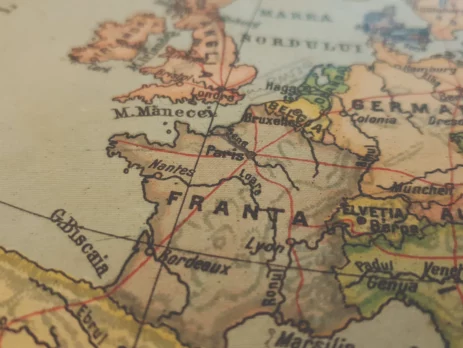Bridging Past and Present: The Significance of Digital Bible Maps in Today’s World
In today’s technologically advanced world, the age-old texts of the Bible continue to captivate hearts and minds across diverse cultures and societies. The stories, journeys, and events recorded in the sacred scriptures offer timeless wisdom and guidance, but they can also feel distant and foreign due to the vast historical and cultural gaps that separate us from the biblical era. However, with the advent of digital Bible maps, the barriers of time and space are being transcended, allowing readers to bridge the past and present. In this article, we will explore the significance of digital Bible maps in today’s world and how they serve as powerful tools for understanding and engaging with the ancient scriptures.
Making the Ancient World Accessible
Digital Bible maps provide a visual and interactive medium to explore the geographical settings of the Bible. By overlaying modern maps with biblical locations, these digital representations make the ancient world accessible to contemporary readers. Users can embark on virtual journeys, tracing the paths of biblical characters and immersing themselves in the landscapes where the events unfolded. This accessibility fosters a deeper connection with the scriptures, bringing the ancient world to life in ways that were previously unimaginable.
Enhancing Understanding through Context
The geographical context plays a pivotal role in understanding the biblical narrative. Digital Bible maps offer a glimpse into the spatial relationships between locations, helping readers grasp the significance of certain regions and the impact of geography on the stories. By visualizing the settings of events and journeys, readers gain a more comprehensive understanding of the context in which the biblical characters lived and the challenges they faced. This contextual understanding enriches the interpretation and appreciation of the scriptures.
Unveiling Symbolism and Patterns
The visual representation of biblical events through digital maps can unveil symbolism and patterns that may be less apparent in a traditional textual reading. By examining the distribution of events across regions or tracing the recurring patterns of journeys, readers can uncover deeper meanings and connections within the scriptures. This heightened awareness of symbolism and patterns can lead to profound spiritual insights and a greater appreciation for the theological messages present in the texts.
Encouraging Interactive Learning
Digital Bible maps encourage interactive learning, making the study of the scriptures engaging and dynamic. Users can explore the maps, zoom in and out, click on locations for additional information, and interact with multimedia elements like images, videos, and audio. This interactivity transforms the process of learning into an immersive experience, allowing readers to delve deeper into the stories and absorb the historical and geographical context. As a result, readers become active participants in their exploration of the Bible, fostering a sense of personal investment in the sacred texts.
Facilitating Cross-Referencing and Research
Digital Bible maps facilitate cross-referencing and research, empowering readers to explore various interpretations and perspectives on biblical geography. By integrating multiple data sources and scholarly studies, users can compare different maps, delve into academic research, and gain a comprehensive understanding of the geographical aspects of the scriptures. This scholarly engagement enhances the intellectual depth of biblical study and encourages critical thinking.
Bridging Cultures and Communities
The Bible is a book that transcends cultural and linguistic boundaries. Digital Bible maps serve as a common platform for people from diverse backgrounds to explore and understand the biblical narrative. The shared experience of engaging with the maps fosters a sense of unity and connection among individuals and communities worldwide. It becomes a bridge that unites people across time, space, and cultural differences, allowing them to embark on a collective journey of discovery and reflection.
Inspiring Spiritual Reflection and Application
Digital Bible maps not only provide historical and geographical insights but also inspire spiritual reflection and application. As readers visualize the journeys of biblical characters or the locations of significant events, they can draw parallels to their own spiritual journeys. The narratives become relatable and relevant, prompting readers to ponder the timeless truths and lessons contained within the scriptures. This transformational aspect of digital Bible maps deepens the impact of the Bible on individuals’ lives and encourages the application of its teachings in contemporary contexts.
Digital Bible maps hold immense significance in today’s world, acting as powerful tools for bridging the past and present. By making the ancient world accessible, enhancing understanding through context, unveiling symbolism and patterns, and encouraging interactive learning, these maps create an immersive and transformative experience for readers. They facilitate cross-referencing and research, fostering a scholarly approach to biblical study, while also serving as bridges that unite cultures and communities. Most importantly, digital Bible maps inspire spiritual reflection and application, inviting readers to engage with the scriptures in profound and meaningful ways. As we continue to embrace technology in our pursuit of understanding the sacred texts, digital Bible maps stand as a testament to the enduring relevance of the Bible in shaping our lives and perspectives, bridging the timeless wisdom of the past with the challenges and opportunities of the present.

